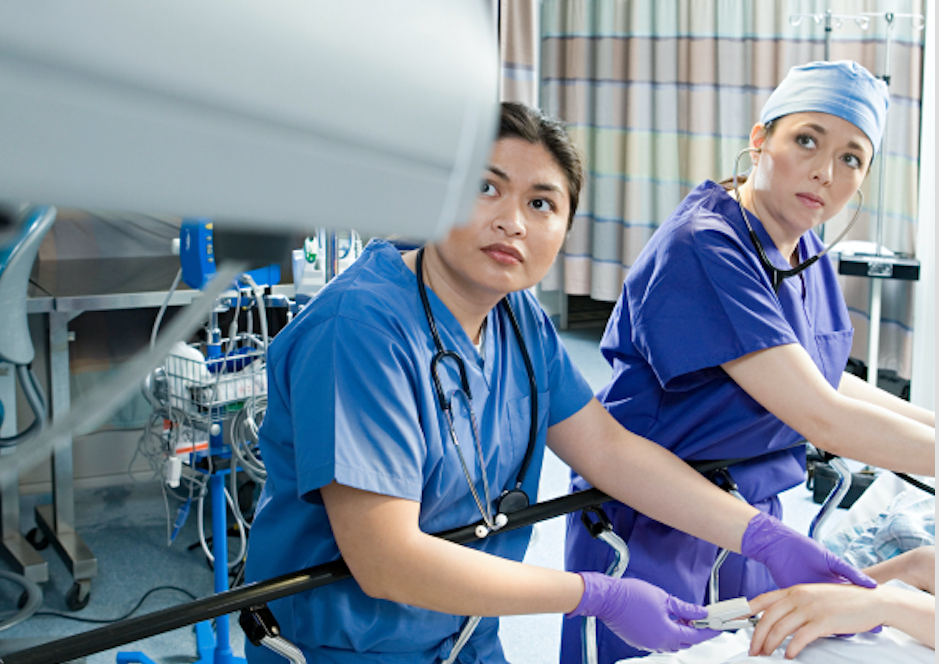CHI+MED impact: towards safer interactive medical devices

Key points
- CHI+MED research has provoked and informed discussion amongst key decision makers about the safe use of interactive medical devices.
- We have shown that medical devices are not always used in the way that fits the assumptions of designers
- We have developed ways that they can be designed so they are used more safely, and
- We have developed ways to check that their design helps prevent not cause accidents.
Background
Interaction design is about the design of how people use devices: the sequences of buttons they need to press to get things done, the commands they need to give, the way information and alarms are presented, the context they are working in, and so on. These human factors affect safety if people are more likely to make mistakes because of the way they have to interact with a device. This was not previously seen as a critical problem: nurses and other clinicians were typically blamed when mistakes were made.
We have focussed on three main themes: understanding how people really use devices in their work or self-care; exploring how people can safely enter data when setting up devices; and creating ways we can check that a designed user interaction will work as intended. We have worked with different groups, including manufacturers; regulators and standards bodies; those supporting clinical work such as device trainers and clinical engineers; clinicians and patients; as well as the general public.
Insights (overview) booklet
This booklet summarises key outcomes from the EPSRC-funded CHI+MED programme. It includes links to these web pages giving more detail about each area of our work as well as references to papers and other resources.
Procurement: healthcare professionals
- We have identified important limitations in current incident reporting systems. We have worked with the Royal College of Physicians, NHS England and the regulator, MHRA, to inform their work on incident reporting. This includes a meeting hosted at the Royal College of Physicians with about 50 participants representing a wide range of stakeholder groups. These organisations are working increasingly closely, building on work initiated by CHI+MED.
- The Association for the Advancement of Medical Instrumentation, a nonprofit organisation of healthcare professionals concerned with medical devices, invited us to present at their annual summit on home use technologies, quoting us in their report about the summit.
- We have identified important areas where there is a lack of evidence to inform decision making e.g., for procurement of new drug delivery systems. A follow-on project (ECLIPSE) has been awarded by NIHR to deliver evidence. This is in collaboration with a team from Brigham and Women’s Hospital (Boston, US).
- CHI+MED work has directly supported procurement decisions in at least one hospital already and is advising other hospitals on ongoing decisions.
Regulators: triggering action
This research has brought interaction design into focus as an important issue for decision makers, leading them to start to take action.
- In the US, the regulator of medical devices, the FDA, have supported and hosted our research and are now applying it in practice for assessing infusion devices. Working with the FDA we have found human factors related safety problems in medical devices that are on the market from a variety of manufacturers.
- In response to our findings about the ‘gaps’ between the way devices are approved and clinical practice, and to our work with FDA, the UK regulator, MHRA, has established a programme of work on human factors for device design. Ann Blandford and Harold Thimbleby both spoke at the launch meeting with the former giving the keynote talk. As a result, NICE, the UK body responsible for providing national advice to improve healthcare, have also stated a commitment to introducing Human Factors into their assessments of Health Technology. Several members of the CHI+MED team have also as a result been invited to be expert assessors for MHRA.
- The UK national standards organisation, BSI, has been exploring how to make standards about medical device design more about process and less about outcomes. They have engaged in discussions with us on a variety of topics that have shaped their approach.
The Justice System (Incidents): Trial evidence
A CHI+MED research acted as an expert witness to highlight that the medical device computer records used in a trial were unreliable at which point the trial against two nurses collapsed.
Education and training

We have provided training and training resources internationally to hospitals to help clinicians understand the issues with problematic designs of current medical devices. We have provided consultancy services to manufacturers and they have invited us to present our work to them and deliver tutorials to their staff. We have provided free inspiring booklets to thousands of schools across the UK, as well as developing new classroom activities, and have given workshops on the activities to hundreds of teachers in the UK and Denmark. Our resources such as videos and the ErrorDiary website, which focuses on everyday errors, have been used widely to support teaching about human error and the role of design in avoiding it. We have led an international team developing resources for junior researchers learning to do studies of how devices are used “in the wild”. This has included writing two books, co-authored by over 20 researchers from Europe and North America.
